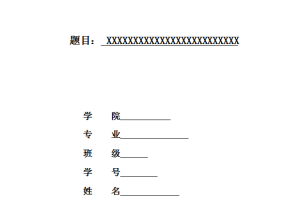摘 要
在中国,增值税会计作为第一大税种,自1984年起 始征收,距今己有二十多年的历史。现如今,增值税会计作为中国最主要的一种流转税,正面临着增值税会计扩大范围改革的新考验。近年来,随着中国社会主义市场经济体制的不断完善与发展,现有的增值税会计法与增值税会计在确定增值额与销售额方面的差异逐渐凸显。中国增值税会计越来越受到社会的广泛关注,它的产生顺应了社会主义市场经济体制的要求。
笔者经过阅读大量的中外文献,采取比较分析法与综合分析法,以问题为主线与导向,从细节出发,一步一步的解决中国增值税会计理论与实务中存在的问题,并在理论结构建设、增值税会计模式的完善以及相应准则的建立方面提出了自己的构想,以求实现“财税适度分离、二者协调发展”。本文的创新之处在于研究结论上,在传统的“财税分离”增值税会计模式的基础上,提出构建以增值税会计费用化为基本立足点的“财税适度分离”的增值税会计模式,并最终借鉴英国中国增值税会计准则与所得税增值税会计准则的成功经验,对中国增值税会计准则的建立提出的自己的看法。
关键词:增值税会计;增值税会计;建议
ABSTRACT
In our country, as the first big tax and VAT since 1984 The beginning, has a history of more than twenty years ago. Nowadays, value-added tax as the main a turnover tax in our country, is facing a new test expand the scope of VAT reform. In recent years, with the constant improvement of China’s socialist market economic system and the development, the existing value-added tax and accounting differences in appreciation and sales gradually highlights. Value-added tax accounting has attracted extensive attention of society, it have complied with the requirements of the socialist market economy system.
By reading a large number of Chinese and foreign literature, the writer USES the comparative analysis and comprehensive analysis, problems as the main line and the guidance, starting from the details, step by step to solve the problems existing in the accounting theory and practice of VAT, and in the theory of structure construction, the perfection of accounting mode and the establishment of the corresponding criteria proposed his own ideas, in order to achieve “fiscal moderate separation, the coordinated development. The innovation of this article is on the research conclusion, in the traditional pattern of “separation of the fiscal and taxation accounting on the basis of the basic foothold to value added tax cost is put forward to the separation of the fiscal and taxation moderate accounting mode, and finally draw lessons from the UK VAT accounting standards and the successful experience of income tax accounting standards, the establishment of the accounting standards for VAT in China put forward their own views.
Keywords:Value added tax; Accounting; advice
目 录
1.1 研究背景与研究意义………………………………………………………………………………….. 1
1.1.1 研究背景………………………………………………………………………………………….. 1
1.1.2 研究意义………………………………………………………………………………………….. 1
1.2 国内外研究动态…………………………………………………………………………………………. 1
1.2.1 国外研究动态…………………………………………………………………………………… 2
1.2.2 国内研究动态…………………………………………………………………………………… 2
1.2.2 文献评价………………………………………………………………………………………….. 3
1.3 个人见解……………………………………………………………………………………………………. 3
2.1 增值税会计税制…………………………………………………………………………………………… 4
2.1.1 征税范围及纳税义务人………………………………………………………………………. 4
2.1.2 税率与征收率…………………………………………………………………………………….. 4
2.1.3 应纳税额计算…………………………………………………………………………………….. 4
2.1.4 优惠政策与纳税期限………………………………………………………………………….. 5
2.2 中国增值税会计的应用理论…………………………………………………………………………. 5
2.2.1 中国增值税会计的计税程序及方法…………………………………………………….. 5
2.2.2 中国增值税会计原则………………………………………………………………………….. 5
3.1我国增值税会计确认与计量方面存在的问题…………………………………………………. 6
3.1.1违背了历史成本原则…………………………………………………………………………… 6
3.1.2 违背了权责发生制原则………………………………………………………………………. 6
3.2 我国增值税会计记录方面存在的问题…………………………………………………………… 6
3.2.1“应交税费”科目的属性混淆不清………………………………………………………. 6
3.2.2“应交税费—应交增值税会计”科目设置不合理…………………………………. 7
3.3 我国增值税会计信息披露方面存在的问题……………………………………………………. 7
3.3.1 中国增值税会计信息的揭示不符合增值税会计报表的内在规律………….. 7
3.3.2 中国增值税会计信息质量方面存在的问题………………………………………….. 7
4.1我国增值税会计理论研究出现偏颇……………………………………………………………….. 9
4.2我国现行增值税会计核算模式的缺陷……………………………………………………………. 9
4.3现行中国增值税会计核算造成企业会计实际税负模糊…………………………………. 10
5.1 构建基于增值税会计费用化的“财税分离”的中国增值税会计核算新模式… 11
5.1.1树立增值税会计费用化观念………………………………………………………………. 11
5.1.2构建新模式的理论依据……………………………………………………………………… 11
5.2“财税分离”的中国增值税会计核算模式构建的可行性分析……………………….. 12
5.2.1“财税分离”的中国增值税会计核算模式构建的基本原则…………………. 12
5.2.2“财税分离”的中国增值税会计核算模式构建的具体方法与步骤………. 13





